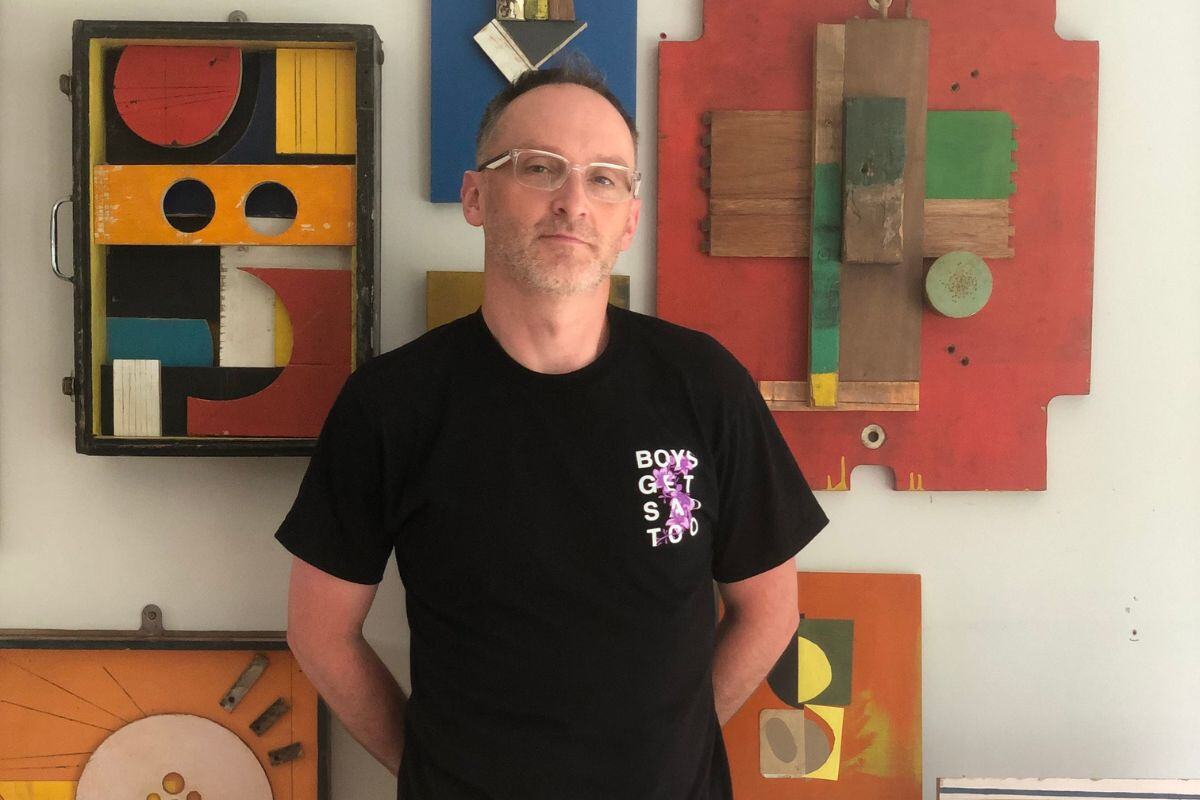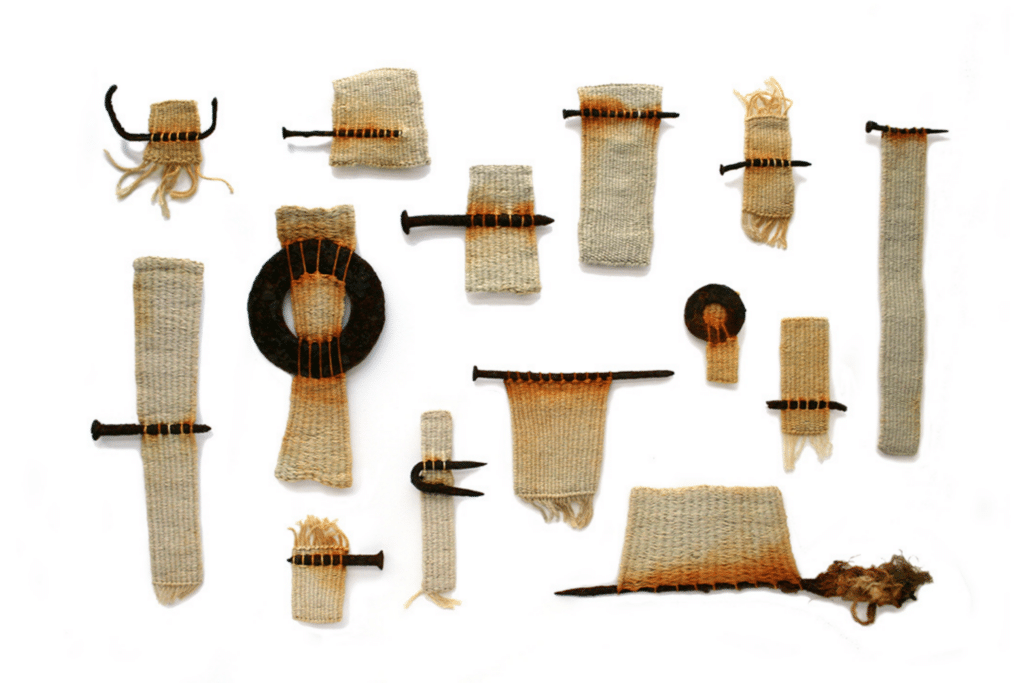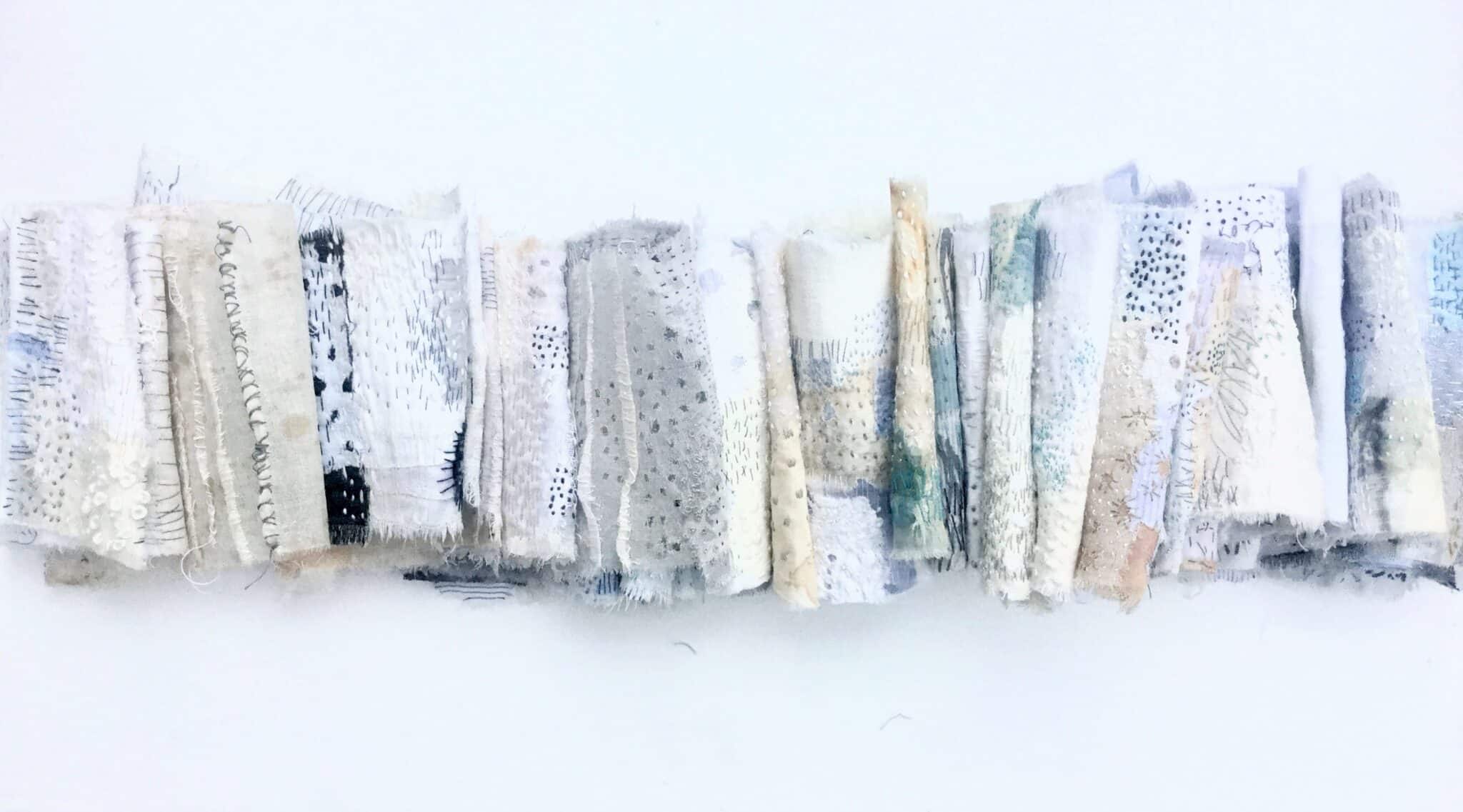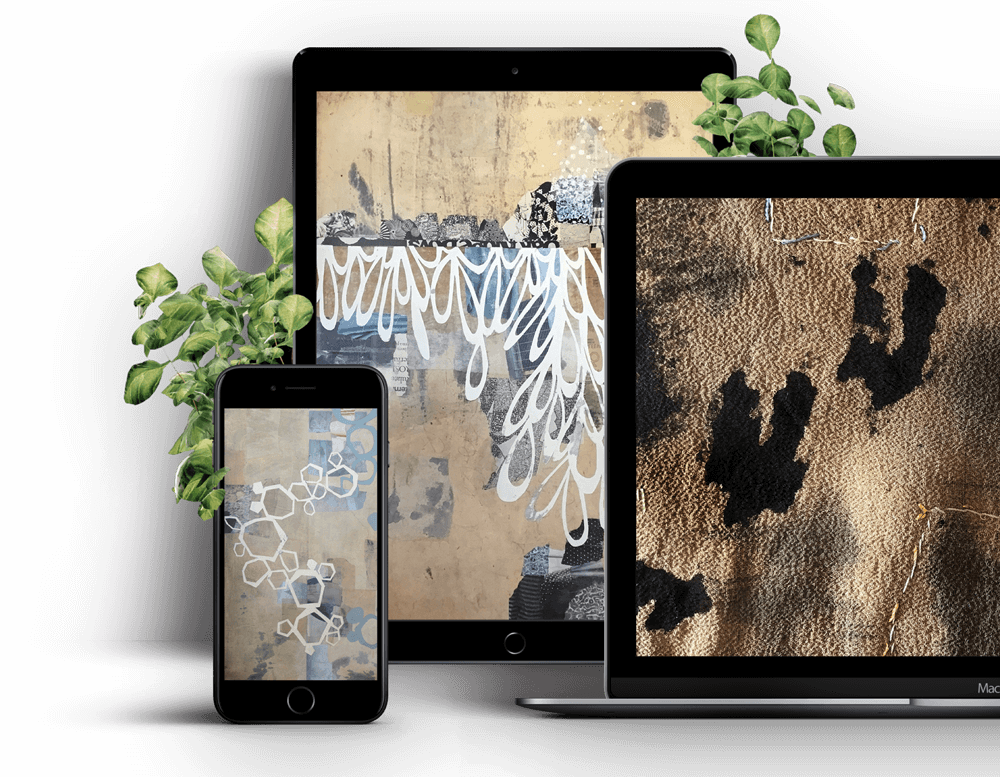Shelley Rhodes: Fragmentation and Repair
Shelley Rhodes’s Friday Feature Artist Interview can be found at the bottom of this page.
Shelley Rhodes brings a level of dedication and sophistication to her mixed media work and art practice that is hard to describe. Shelley loves to travel and has formed an art practice that is flexible, achievable and goes with her everywhere.
Inspired by the environment, Shelley is known for her beautiful layered artwork that combines fabric, paper and stitches with drawings and prints. She works in her home studio in the north of England, and she’s a member of the textile study group and the author of two books. Fibre Arts Take Two is delighted to offer you an insight into the many facets that make Shelley and her work so special.
Fragmentation And Repair
Shelley’s latest book, Fragmentation And Repair: In Textile And Mixed-Media Art, was released mid-2021 “After my first book (Sketchbook Explorations: Mixed Media Approaches For Textile Artists),” says Shelley, “I thought it’d be really nice to write a book that was based around my textile work and my stitch work.”
More than that, Shelley wanted to test herself, “I wanted to see if I could do it again a second time,” she says, “The first book, you think ‘was a bit of a fluke? Did I really do that? Could I do it again?’ I think the two books complement my practice. The first book was very much about my sketchbooks, and drawing research, and the second book is a lot more about my approach to stitch and how I use those drawings in my stitch work and how I try and combine the two.”
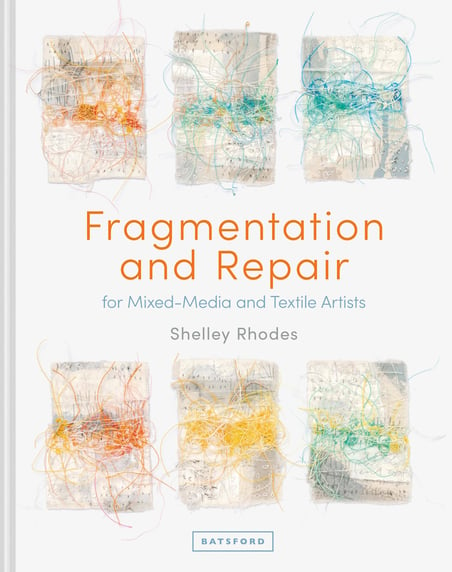
Stitched marks
Shelley explores the marriage of drawing and stitching in Fragmentation And Repair: “Something I’ve been trying to do since I became a textile artist and mixed media artist,” she says, “is how to combine those lovely spontaneous draw marks into a stitched mark. What a lot of artists do is work quite large and then fragment those larger marks and put them back together in some way. I got very interested in the idea of repairing things, things that I’ve torn, and also linking to the idea of wabi-sabi and the imperfect, so that’s really what the book is about and really. I always try and push my ideas as far as I can. If I do something and think, ‘Oh, well, that’s okay. What could I do to it to make it even better?’ Or ‘can I alter it in some way?’ That’s what is in the second book.”
Coral
Shelley is working on the latest project for her textile study group exhibition next year. Shelley is exploring coral bleaching.
“I started to look at how plastic affects the coral, and I made a series of work that was linked to looking at museum cases and work displayed in museums and how if we don’t protect our environment you’re going to be going to museums to look at bits of plastic. Following on from that, as I was doing my research and looking into plastic and its effects, I started to read about how plastic becomes entangled around the coral, around all marine life. I’ve seen photographs of turtles completely wrapped in plastic and fishing lines, so I started gathering lots and lots and lots of plastic from the beaches. I’ve got this word entangled in my head, a piece that’s linked to that entanglement.”
The exhibition is called Making 50 because next year marks the 50th anniversary of Shelley’s textile study group. “Somewhere within all members’ work,” Shelley says, “We want 50. And you could be doing 50 units, or your work could have 50 letters in it, or it could have taken 50 hours or anything. I’m making these strips from plastic that are 50 millimetres deep approximately. I’m either going to work to 50 feet or 50 metres of this stuff.”
Different outcomes
Shelley’s aim when teaching is to guide students towards discovering their own style,
“I always hope at the end of my courses that students will take the ideas and put their own stamp and take things in their own way,” she says, “I want them to take their own style of working and hopefully just push the work forward. I think that’s why I say, ‘you could do this or this or this or this,’ so at the end of the workshop or the course, everyone has a different outcome, and I really love that. It is great to see all the different ways that students have opted to take the work. So that’s why I like to teach in that way.”

Colour
Shelley is always very deliberate with her colour choices, “I tend to use flashes of strong, bold colours,” she says, “but not the whole piece being strong and bold. My colour palette got really soft and gentle because I was looking at the coral and the bleaching, and it went to almost white bread, creams, and greys because that’s what I was looking at.”
Shelley’s colour palette is very much inspired by what is happening in her art, “I often take my colour palette inspiration from whatever the subject is I’m looking at. I did make a series of work a number of years ago, I was looking at corrugated iron shacks that had been painted, and all the paint was peeling off. It was a much stronger colour palette. The colour palettes really reflect what I’m looking at quite often. The piece I’m currently working on, again, is mainly whites, because I’m trying to reflect the damage to the coral reefs, but there are these flashes of really strong colour in there as well.”
Workbooks
Shelley is a major believer in using workbooks to keep track of your thoughts and ideas, “When you think, ‘oh, actually, that was a great idea, and I didn’t follow that through, so I’m going to jump back to that’ that’s why I always have a workbook, and I encourage students to have one of their own.”
“I use the word workbook rather than sketchbook because it’s more than a sketchbook. It’s where you keep all your ideas and try out some tests and research,” Shelley explains,
“With my coral series, one of my very first little initial jottings was like a tiny little diagram of pieces of plastic in display boxes, like in a museum. But I worked on this piece, and it took me about a year. And it was only later that I jumped back and thought, actually, I never never saw that through, and I’d quite like to. So then I could jump back to that and follow that idea through.
When you work this way, you never run out of ideas because all the ideas in your head are out. You get them out into your workbook, even if it’s just a little scribble on a post-it. Once it’s out of your head and written down, it’s there, and at any point, you can refer back to it.”

About the artist
Shelley is a mixed-media artist focused on the concept of fragmentation and repair. Cloth, drawings and objects are often fragmented before being reconstructed in some way. She takes inspiration from her environment by observing, drawing and collecting. She is drawn to the effects of time, the transience of nature, the things that go unnoticed and the ever-changing fragility of the things around her.
Notifications
Join Our Newsletter
OUR YOUTUBE CHANNEL
View our interviews and more on our Youtube channel!
OUR FACEBOOK GROUP
Join our Community and stay updated with our upcoming announcements!

